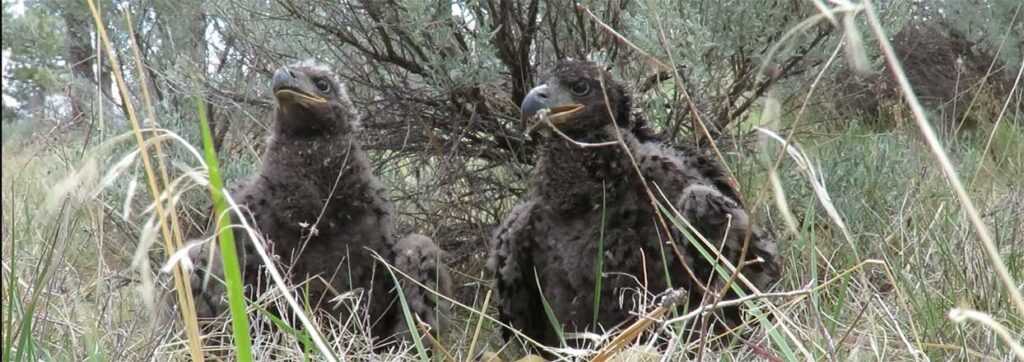Research Brings Good News, Bad News

In the ongoing conservation and recovery efforts for Southern California’s Bald Eagle population, Friends of the Desert Mountains (Friends) in cooperation with the US Forest Service/San Bernardino National Forest (USFS) is delighted to report Lake Hemet’s adult breeding pair successfully hatched two offspring this year. On Wednesday, April 30th, the juvenile birds were banded for tracking and further studying by Peter Bloom of Bloom Biological.
Bald eagles were once critically endangered, but their recovery is a testament to the effectiveness of conservation efforts. Studying them helps monitor their population, identify potential threats, and ensure their long-term survival.
Bald Eagles were removed from the U.S. Endangered and Threatened Species List in 2007. However, they remain protected under federal laws like the Migratory Bird Treaty Act and the Bald and Golden Eagle Protection Act, which prohibit killing, harming, or possessing them.
US Forest Service Volunteer Robin Roberts keeps a keen eye on the nest with a pair of binoculars along the north shore of Lake Hemet. It was Roberts who alerted USFS staff that the eaglets had hatched, and then monitored them for weeks until old enough for banding. “About four to five weeks is the optimum time for banding,” according to Bloom. ”The young birds still are docile and do not yet have flight feathers.” Bloom noted that although the birds were too young to determine gender, the two juveniles seem very healthy.
The banding process requires removing the birds from their nest briefly. Bloom contracts with expert tree climber Ryan Krammes to slowly ascend to the nest site. Once there, each bird is lowered down the tree, secured in a soft-sided carrier, to Bloom’s waiting arms. “Having their chicks banded for the last 10 years, the parent eagles are somewhat acclimated to the process,” said Bloom. The adults leave the nest, but remain close keeping a watchful eye. The banding process takes less than an hour and the juveniles are returned to their nest.
While on the forest floor, one at a time the birds are banded on each leg with their ID # for tracking. Additionally, a small amount of blood was drawn from each bird for testing, allowing biologists to assess the effects of human activities like development, pollution, and climate change on their populations and habitats. Says Bloom, “Unfortunately, we are seeing an uptick of toxins in our medium to large birds of prey again.”
Members of the public who spot a banded bird in the wild should note the band # and report them to the Bird Banding Laboratory at the US Geological Survey. Bloom said they often are contacted by people who have seen a banded bird and want to know more about them. Bloom’s staff gladly obliges these “community scientists” with what information they have. Friends’ staffer Karin Jaffie attended this year’s banding and remains in awe of these majestic species, even when they are just fuzzy “little” chicks. Said Jaffie, “When everyone works together and understands how interconnected we are to the land, we can help nature heal.”
About Friends
Friends of the Desert Mountains connects people to the land through conservation, education, and research. We also are the official non-profit partner of the Santa Rosa and San Jacinto Mountains National Monument. We engage all ages and abilities to reveal the wonders of the fragile desert and mountains we call home and instill an environmental awareness that we hope lasts a lifetime. Funding for Lake Hemet’s Eagle Banding is provided by Edison International.